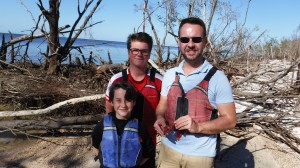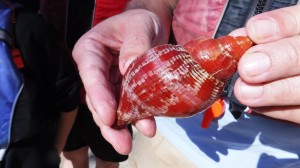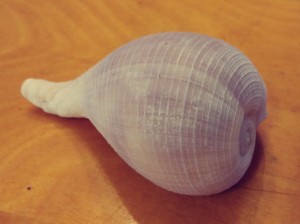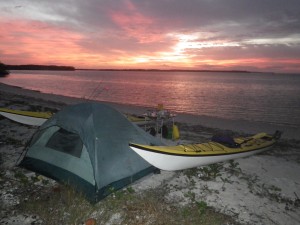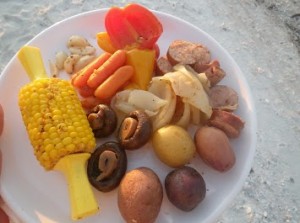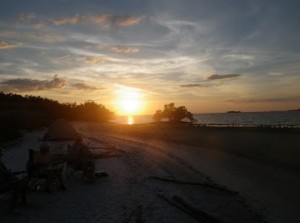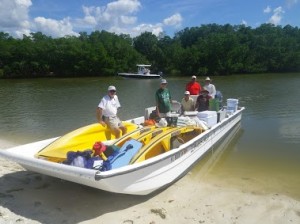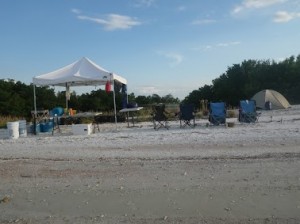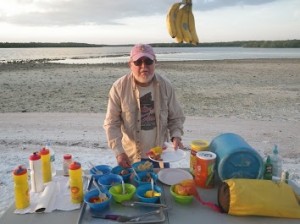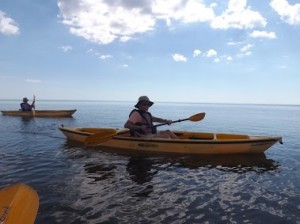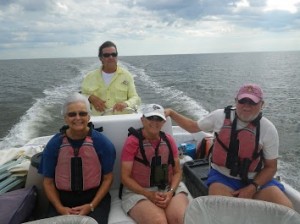Do you want the good news, or the bad?
(HINT – It’s not as bad as you might think)
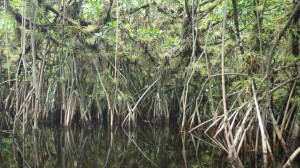
A beautiful mangrove tunnel in the Everglades
Let’s start with the bad: The Western side of Everglades National Park has undergone some September ‘revisions’, thanks to Hurricane Irma. Many of the mangroves were stripped of their leaves, and the shallow areas in some parts of the park bears a slight resemblance to a game of jacks, with the spikes sticking up out of the shallow water from the uprooted mangrove trees that were thrown about by the force of the winds. The storm surge has had its effects as well. Some of the regular channels that the power boaters use, have ‘migrated’ somewhat, encroaching into their former safe passages. Some beaches have gotten bigger, and some may have washed away or diminished. Most, if not all of the porta-potties in this part of the park are non-existent. A full report of damage to the park’s chickees has still not been issued.
Okay, so that’s the bad news. Here comes the good: The nature of these islands is in full recovery mode, and it is automatic. That is the great thing about nature. While many of the mangroves were stripped of their leaves, they were ALSO stripped of their ‘propagules’, scattered by both wind and water. Propagules are those ‘long-green-bean-looking-things’ that you see in the water when you are in SW Florida. They are NOT seeds. They are NOT seed pods. They are trees. Or maybe I should say, ‘potential trees’. The mangrove propagule is one of those incredible, and almost unbelievable things in nature that makes you scratch your head and go, “Huh???” You see, after the mangrove flower is pollinated, the seed is not only formed in the plant’s ovary, as with other flowering plants… it also GERMINATES inside of the ovary. The new tree starts growing while it is still attached to the mother tree and receiving nourishment from its mother. Sound familiar? It should. This tree receives nourishment from its mother, just as we received nourishment from our mothers, while still in the womb. Hurricane Irma separated the propagules from their mother trees, and already, I have been seeing them washing up on the beaches, and getting stuck on the many oyster shoals, beginning the process of the creation of many about-to-be-islands… for that is EXACTLY how these 10,000 Islands were formed, and continue to form. It is a process that takes years, but that is how it is done – so, be sure to thank the next oyster and the next mangrove tree that you see, for without them, we would not have this magnificent natural playground that we enjoy so much.
I had the pleasure of guiding a boat-assisted kayaking trip a few days ago, assisted by Captain Heather, of Everglades Area Tours.
http://evergladesareatours.com/kayak_tours.htm#boat-assisted
It was very close to dead-low tide as we left the marina, and because of the new ‘obstacle course’ that we had to thread our way through, we took it very slowly, as we checked out our new surroundings. Rabbit Key Pass and Chokoloskee Pass are not as overtly well-marked as Indian Key Pass, Port of the Islands/Panther Key Pass, and Coon Key Pass, but there were landmarks that every good boat Captain knew, and had committed to memory. Now, to continue as one of those good Captains, they must re-learn parts of the passes. Heather talked to herself out loud for everyone to hear, as she noted the changes in the course. I am sure that it was as much of a memory device for herself, as it was to tell everyone aboard, the changes that we were seeing.
A Snowy Egret shows off its beautiful yellow feet.
On our way out Chokoloskee Pass, we saw White Ibis walking on the Red Mangrove roots, along with Snowy and Great Egrets, Great Blue and Little Blue Herons, both adult and juvenile. I explained that many people often mistake the juvenile Little Blue Heron for Snowy Egrets, because of the white coloring of the juvenile. They don’t start to get their beautiful blue coloration until they are about a year of age – similar to the juvenile White Ibis losing its brown feathers and growing in white as it matures.
My guests for this trip consisted of a family of three from Austria, and a couple from Canada. Everything in the islands was something new, as Christian Huetterer, one of my Austrian guests explained. He asked if I ever could lose the wonderment of seeing so much life all around us. I explained that as a guide, I see all of the seasonal changes, and look forward to the blooming of the flowers, such as the String Lilies and Scorpion Flowers and the various native orchids, along with the seasonal migrations of the majestic White Pelicans and other migratory birds. The thing that was new for me, more than the others on this particular trip, was the abundance of seashells that we were soon to see, on the beach.
Christian Huetterer & family.
As we approached our starting point for the kayaking part of our trip, we paused and watched a fisherman battle an over-slot-sized Snook to his boat, and then hold it up proudly for all to see – just magnificent. This Snook was easily on the plus side of 3 feet long. After the unscheduled show, Captain Heather anchored, using the boat’s hydraulic stick pin, then we slipped the kayaks into the water and boarded.
The first shell that I spotted in the shallows as we paddled our kayaks to Jewell Key, was Florida’s State Shell, the Horse Conch. This one was not huge, as Horse Conchs go, but it was a nice specimen, at about 10” long. That was just the preview. Hurricane Irma’s storm surge, combined with the wind-driven waves, roiled up the shallow tidal flats and cast many live shells up onto the islands, where many of them subsequently died. I am sure that a month & a half earlier, the beach would have been saturated with the foul smell of dead and dying seashells, but now, they were all cleaned out, and that horrible stench was gone.
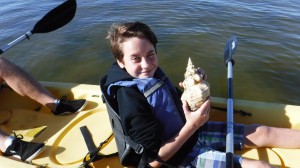
Christian’s son, with a Horse Conch
A gorgeous True Tulip shell.
There were the usual Lightning Whelks, Fighting Conchs, Pear Whelks and even the gorgeous True Tulip Shell, but I was amazed at the numbers of fully intact Paper Fig Shells. Fig Shells are not a colorful shell. They do have a pleasant orange glow of color on the inside portion of the shell, but the outside of the shell is a plain creamy white. The thing that is so striking about the Fig shell, are the soft curves, and the beautifully cross-hatched lines that texture the outside of the shell. The reason that few people ever see the Paper Fig Shell in an intact condition, is hinted at by the ‘paper’ part of its name. This shell is extremely thin, and fragile. They typically break apart while the waves roll the empty shell in to shore, but that didn’t happen with Irma. The animals were still inside with their rigid operculums (trap doors) helping to keep the shells whole, as they were being deposited on the high grounds of the islands.
The delicate Paper Fig shell.
The mangrove trees, which had been stripped of their leaves on the windward side, now have a glow of green forming, as their new leaves open up and fill out the branches. The recovery is well underway.
For those who may be thinking of adding to their shell collections, keep in mind that NO collecting of shells is allowed in Everglades National Park. That is not true of the 10,000 Islands National Wildlife Refuge… basically Marco Island southeast to Everglades National Park. Captain Ed Romig takes guests on shelling tours through our sister company, Marco Boat Tours. As always, the collecting of live seashells is prohibited.
http://marcoisland-boattours.com/shelling_tour.html
If you were hesitating in planning a trip to the 10,000 Islands, because of Hurricane Irma, hesitate no more! The nature of these islands awaits you.
About the author:
Don “Woodkayaker” McCumber has been kayaking for about 25 years, and works as a guide, taking guests on day trips and kayak camping trips with Everglades Area Tours, in Chokoloskee, FL. He is certified as a Coastal Master Naturalist through the University of Florida’s Master Naturalist Program. Don is one of the volunteers for the FPTA, and is available for public speaking events.


